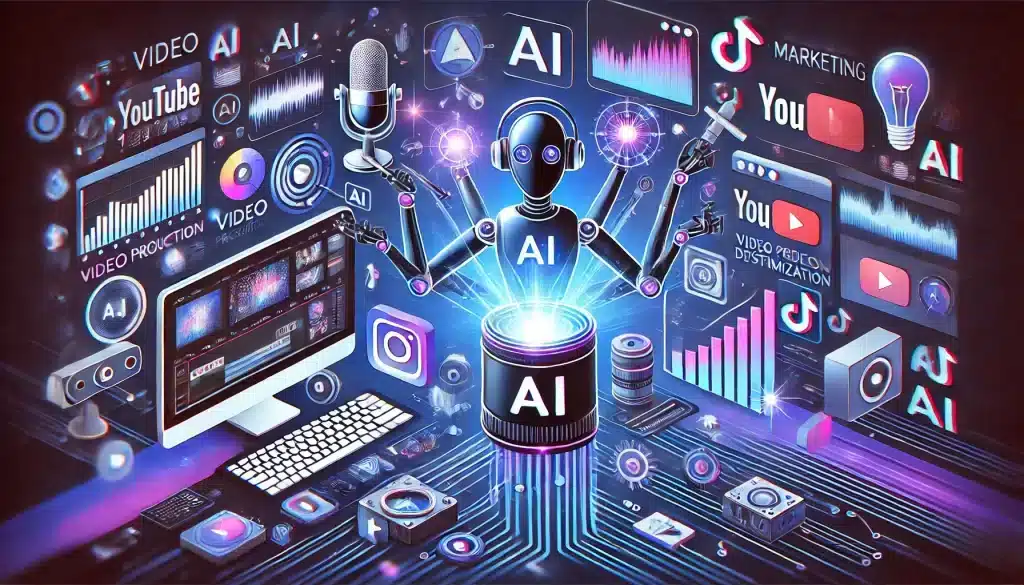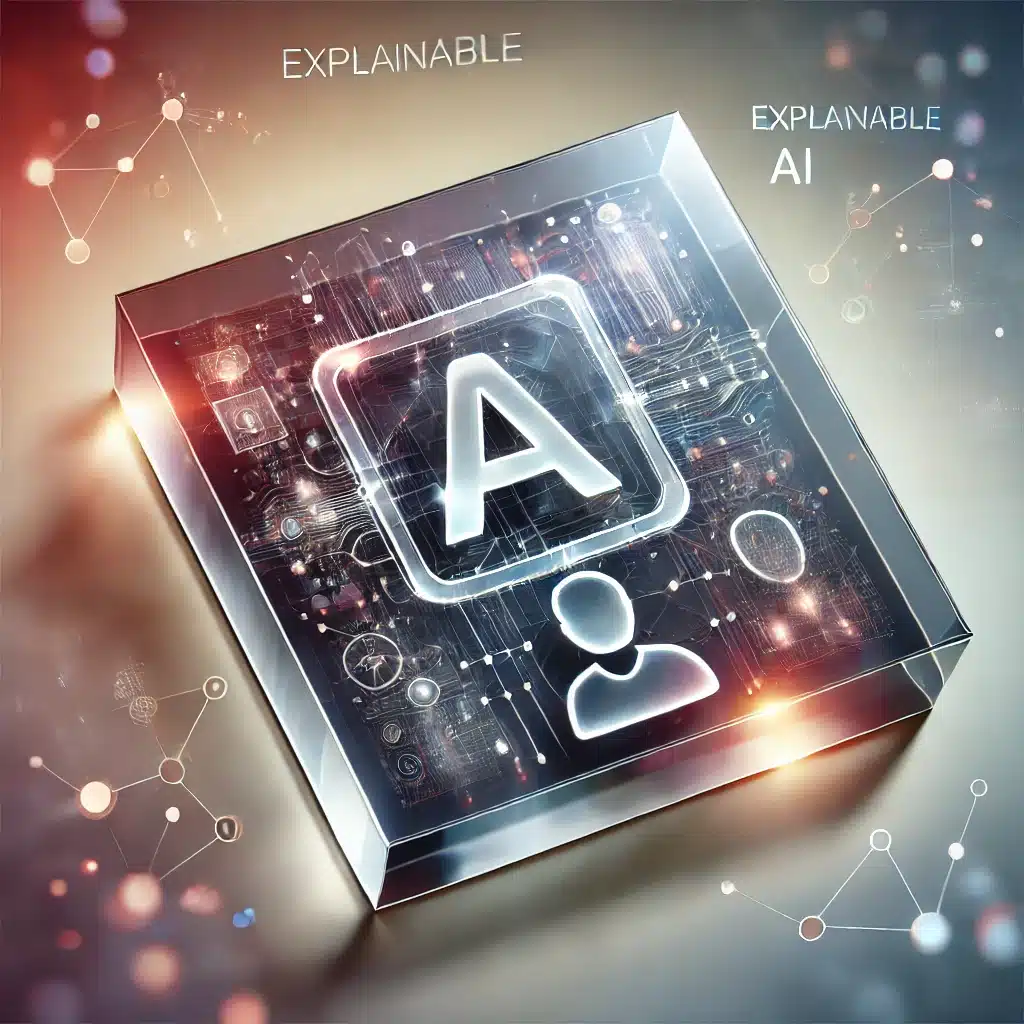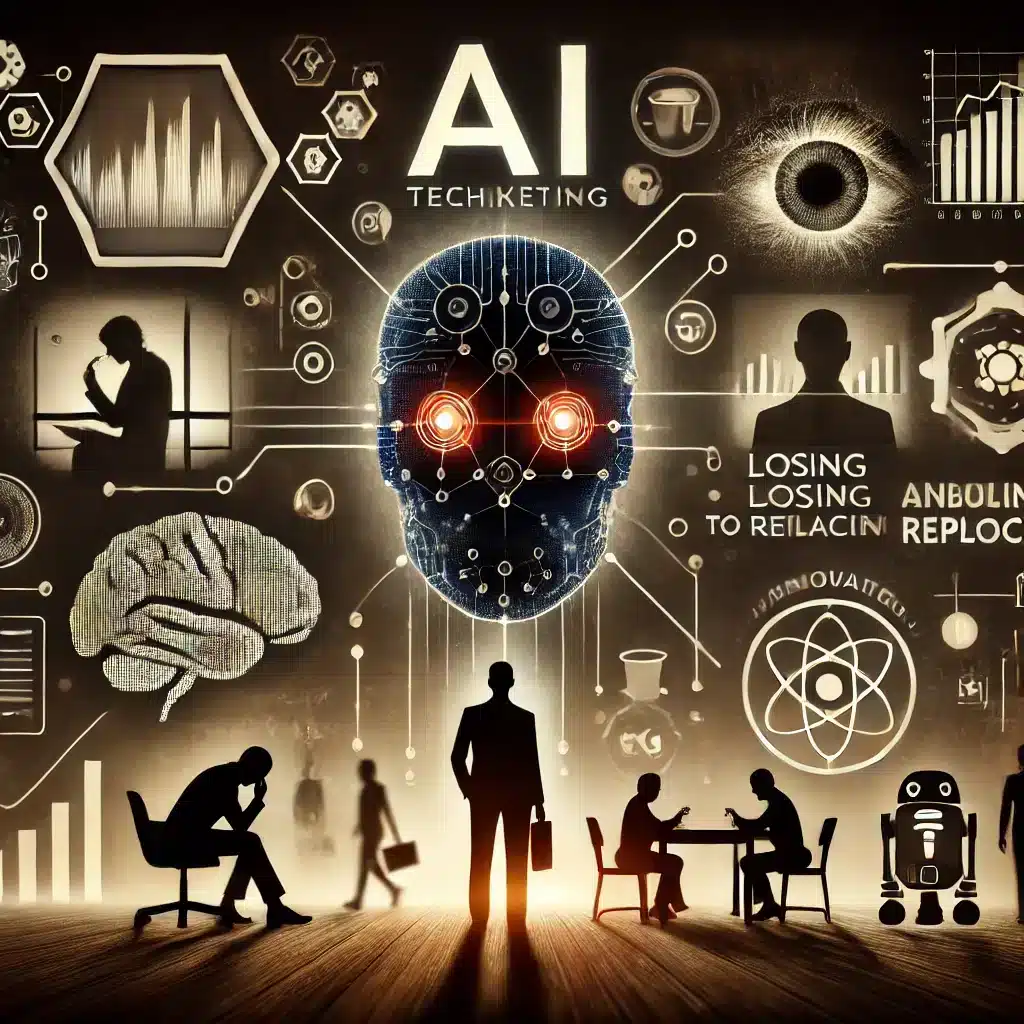Today, video content is at the top because of the fierce content competition in the digital-first world. It engages consumers through multiple channels, increases retention, and converts to higher rates than other media formats. However, with the evolution of AI, the art and science of video marketing are rapidly changing, too, for it has changed how marketers create, optimize, and deliver video content and opened new avenues for efficiency, creativity, and personalization.
It would discuss how AI can improve video marketing: from automation of the production process to the optimization of the delivery, and up to real-time personalization.
AI in Video Marketing
The Rise of Video Content in the Digital Era
In this content-based world, today, video content is not a trend, but a need. Industry research shows that over 80% of internet traffic is video-based. Be it a short-form video on TikTok or long-form content on YouTube, video is the new form of defining successful marketing.
A mix of visual and audio content, video appeals more to the senses than text or an image. It has also proven that video content will draw more engagement compared to other content with respect to static content, thus communicating effectively with someone who might be interested in something.
This further makes information retention more vivid to study where views record at 95%, holding such content; yet with text, at best one holds 10% in memory. Therefore video communication seems to have the prospect for longevity of impact upon viewer end.
This expands reach; YouTube, Instagram, and Facebook are video-centric platforms. Videos appear much more frequently in the feeds of users primarily because of algorithms driving video-centric content on those platforms. Video content is resource-intensive for creating impactful content. Be it at the level of content curation or execution, AI comes in at every level, playing a game-changer role in video marketing. Scaling and optimizing engagements ensure that the right content reaches the right people.
How AI is Transforming Video Production
AI simplifies and enhances video production, making it accessible and efficient for businesses of all sizes. Let’s explore the ways AI is reshaping the creation process:
1. Automating Video Editing
Traditional video editing is a skill-intensive and tools-intensive affair with time. AI-powered video editing tools, such as Magisto, Runway, and Pictory, boast the following:
- Automatically adjusting uncut video to the appropriate lengths. AI can swiftly identify the best moments in video rather than having to go through it by hand.
- AI-powered color correction, noise reduction, and frame stabilization may improve video quality and provide results that seem professional in a matter of minutes.
- Editing becomes more consistent and efficient when transitions, music, subtitles, and animations are added automatically.
Instead of wasting time on technical concerns, this automation frees up marketers to concentrate on the strategic and creative elements of video production. In addition to speeding up the creation of videos, AI is also offering capabilities that raise the standard of production as a whole.
2. Generating Scripted Content
Jasper AI, Writesonic, and Copy.ai are some AI platforms that help generate exciting and well-structured scripts suited for specific audiences. Analyzing industry trends, strategies from competitors, and preferences from the target audience, they formulate ideas to be written upon, thereby resonating with those. Data and patterns retrieved from existing content allow AI tools to suggest topics, formats, and styles previously resulting in higher engagement.
For example, an e-commerce store can leverage AI to draft scripts for product demonstration videos where customer pain points could be discussed and solutions sought. Indeed, most AI platforms can generate the script for almost all types of videos, such as tutorials to promotional videos, optimized specifically for user engagement.
3. Producing Videos at Scale
Businesses can use text-to-video technology and digital avatars to generate videos with AI technologies like Synthesia and DeepBrain AI. These tools are perfect for creating a broad range of videos, such as:
- Product guides.
- Modules for employee training.
- Videos in multiple languages for a worldwide audience.
This ability to scale video production helps businesses meet growing content demands and tailor videos for diverse target audiences without the need for extensive production teams. In this way, AI is enabling the creation of large volumes of video content at a fraction of the traditional cost.
The Role of AI in Audience Analysis
The cornerstone of effective video marketing is audience awareness. By enabling marketers to delve deeper into audience data, AI makes sure that every video aligns with the tastes and habits of its viewers.
1. Understanding Viewer Preferences
These analytics tools include Google Analytics, Vidooly, and Tubular Labs. They track the viewership usage data of:
Watch times and drop-off points: This insight will help marketers understand where viewers get bored and optimize accordingly for the content.
- Viewer demographics: age, location, interests AI helps differentiate the viewers such that content is produced for specific groups of an audience.
- Preferred videos: It can tell using AI whether an audience prefers tutorials, reviews of products, vlogs, or behind-the-scenes content.
Hence, use AI to gain actionable insight into video strategies, focusing their efforts on what their intended customers expect and what would engross them.
2. Predicting Video Performance
AI-powered analytics forecast which aspects of a video, such as its tone, length, or images, are most likely to be successful. For instance, while concentrating on lengthier, more in-depth material for YouTube, AI can recommend making shorter, more interesting videos for TikTok. AI may generate performance forecasts that assist companies in determining the kind of content to produce and the best time to distribute it by evaluating past data and contrasting it with current trends.
3. Enhancing Real-Time Interactions
Some AI platforms even alter and update videos instantly with respect to the behavior of their viewers. For example, the AI algorithm can, indeed, change the rate at which a video unfolds when it senses that more and more viewers pause or rewind the video for part of the tutorial. All this happens in real-time while keeping the viewer engaged through relevance in real-time.
Optimizing Video Distribution with AI
An excellent video is just half the battle; distribution is as crucial as quality. AI ensures that your videos reach the right audience at the right time to optimize reach and engagement.
1. Platform-Specific Recommendations
AI tools analyze platform-specific trends to suggest the best channels for distribution. In this case:
- Short, snappy videos did well on platforms like Instagram Reels and TikTok, where the expectation is for bite-sized content.
- The actual reason educational content performs well on YouTube and LinkedIn lies in exposure to more elaborate video content and thought leadership.
- Live video streaming keeps people stuck on Facebook and Instagram as if something is happening live.
It analyzes platform characteristics and enables marketers to tailor video formats to maximize engagement.
2. Timing Optimization
SocialBee and Hootsuite, two AI applications, examine audience behavior to recommend the best times to post. This guarantees that videos get the most exposure and interaction at the times when people are most likely to engage with the material. AI can recommend the best times to post by considering audience activity patterns, platform-specific trends, and worldwide time zones.
Marketers should prevent wasted effort and make sure their films are seen by as many people as possible by scheduling their posts optimally.
3. Video SEO Enhancements
Platforms with AI capabilities, such as TubeBuddy and VidIQ, enhance video discoverability by:
- Creating keyword-optimized titles and descriptions: By recommending SEO-friendly metadata, AI systems make sure that movies appear higher in search results.
- Effective hashtag and tag suggestions: AI may assist in identifying popular and pertinent hashtags for increased reach, and hashtags are crucial for social media discoverability.
- Making visually appealing thumbnails: Thumbnails are essential for getting visitors to click. AI-powered tools can produce or recommend thumbnails with a greater click-through rate. Improved SEO ensures that video content ranks higher in search results, reaching a broader audience organically.
Improving the SEO means the video will rank better in search results, which would mean the video reaches a broader audience through organic reach.
The Power of Real-Time Personalization
Personalization is no longer a luxury—it’s a necessity in modern video marketing. AI enables marketers to deliver hyper-personalized video content that speaks directly to individual viewers.
1. Personalized Product Recommendations
Today, personalization is an imperative element of video marketing and can only be achieved with the support of AI, which creates hyper-personalized videos for speaking directly to individual viewers. An e-commerce business can combine AI into personalized product recommendations within a video. For instance, a beauty company could provide skin-type and preference-based makeup tutorials for a viewer, while a fitness company could show a particular workout that focuses on the viewer’s goals and interests. The video content is far more relevant at this level of customization, greatly propelling engagement and conversion.
2. Dynamic Visual Adjustments
AI can dynamically alter video content based on a viewer’s location and language. Tools powered by AI can automatically change subtitles or spoken words to match the viewer’s geographical region, making the content more accessible. In addition, AI can optimize video resolution and format for any device, ensuring an ideal viewing experience whether the viewer is using a mobile, desktop, or tablet. AI personalizes content based on the viewer’s past interactions with the brand, making the experience more relevant and engaging as the video content is aligned with the viewer’s preferences and behaviors.
3. Interactive and Shoppable Videos
Moreover, interactive and shoppable videos powered by AI allow viewers to engage with the content in real time. For example, a viewer can click on a product within the video to learn more or add it to their cart, with AI tracking the interaction and updating the product recommendations accordingly. Viewers can also answer quiz-style questions to receive tailored suggestions, such as selecting style preferences, which AI then uses to showcase relevant products. Shoppable videos can help drive conversions through reduced buyer’s journey by also providing a seamless shopping experience directly within the video.
Conclusion
AI is changing the face of video marketing by enhancing each step of the video-making, optimization, and dissemination process. From automated video editing and script generation to audience preference prediction and real-time personalization, AI equips marketers with the capability to bring highly engaging and relevant content to the audience through video content. With AI helping to streamline production and better understand their audiences, businesses can now make videos that speak deeper to their target audience, therefore ensuring they remain ahead in this highly competitive digital world. The future of AI will unlock so many more innovative opportunities for marketers to scale their content and engage their audiences in ways unprecedented.
AI-driven tools in combination with the growing need for video content ensure that video marketing will always remain a critical part of any brand’s strategy. AI, in turn, is not just making video marketing better; it’s revolutionizing it by delivering personalized, optimized, and interactive video experiences.
FAQs
How does AI help in video production?
AI helps to automate or at least partially automate lots of tasks: editing, color correction, noise reduction, and much more. AI tools can also generate video scripts, personalized content, and videos at scale, which makes production fast, efficient, and affordable.
Can AI predict how well a video will perform?
Yes, AI-powered analytics can predict how well a video will perform by analyzing viewer engagement data – such as watch times, drop-off points, and demographics. This enables marketers to optimize video content for maximum impact and engagement.
How does AI personalize video content in real-time?
AI personalizes video content in real time. AI personalizes video content in real-time based on viewer behavior, preferences, and demographics. It can adjust video elements such as language, content style, and product recommendations to match the needs of the specific viewer and enhance engagement and conversion rates.



